Your cart is currently empty!
Blog
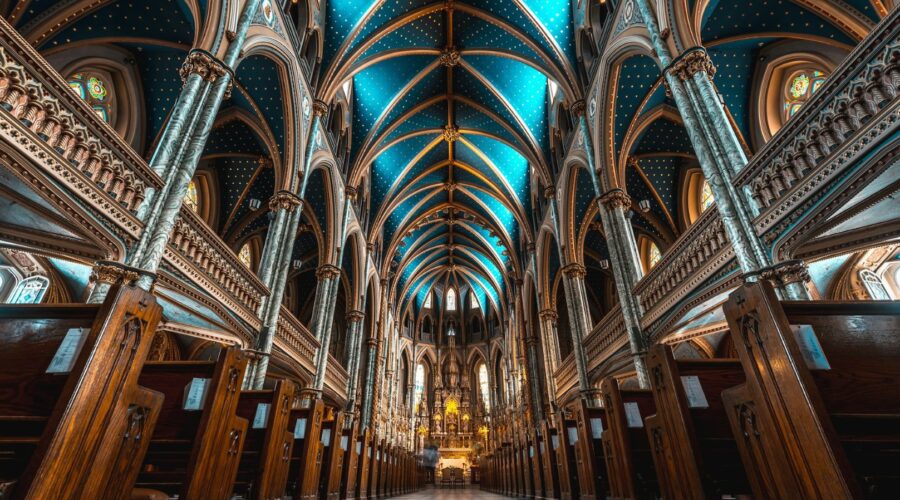
Thursday Prayer: A Comprehensive Guide to the Sunnah and its Benefits
Introduction
Thursday is a significant day in Islam, as it holds special religious value and is associated with the Sunnah of the Prophet Muhammad (PBUH). The Sunnah, the collection of the Prophet’s teachings and practices, provides guidance on the recommended actions and prayers for this day.
Sunnah for Thursday Prayer
According to the Sunnah, the recommended prayers for Thursday include:
- Sunnah Mu’akkadah: Two Raka’at before Thuhr (Dhuhr) prayer
- Sunnah Ghair Mu’akkadah: Four Raka’at before Thuhr prayer
- Sunnah Rawatib: Two Raka’at after Thuhr prayer
Prayer Times
It is recommended to perform the Sunnah prayers at the following times:
- Sunnah Mu’akkadah: 10-15 minutes before Thuhr
- Sunnah Ghair Mu’akkadah: 20-25 minutes before Thuhr
- Sunnah Rawatib: Immediately after Thuhr
Supplication (Dua) after Thuhr Prayer
The Prophet Muhammad (PBUH) encouraged Muslims to recite the following supplication after performing Thuhr prayer on Thursday:
اللَّهُمَّ إِنِّي أَسْأَلُكَ فِي هَذَا الْيَوْمِ خَيْرَهُ وَخَيْرَ مَا فِيهِ، وَأَعُوذُ بِكَ مِنْ شَرِّهِ وَشَرِّ مَا فِيهِ
Translation: O Allah, I ask You for the good of this day and the good that it holds, and I seek Your refuge from the evil of this day and the evil that it holds.
Benefits of Thursday Prayer
Performing the Sunnah prayers on Thursday is believed to bring numerous benefits, including:
- Remission of Sins: The Prophet Muhammad (PBUH) said, “Whoever prays four Raka’at on Thursday, Allah will forgive his sins.” (Tirmidhi)
- Protection from Calamities: “Whoever prays eight Raka’at on Thursday, Allah will protect him from calamities until the next Thursday.” (Bayhaqi)
- Abundant Blessings: “Whoever prays twelve Raka’at on Thursday, Allah will grant him the reward of a thousand martyrs.” (Ibn Majah)
- Intercession of the Prophet: It is believed that those who observe the Sunnah prayers on Thursday will be among those for whom the Prophet Muhammad (PBUH) will intercede on the Day of Judgment.
Tips for Observing Thursday Prayer
- Make an intention to perform the Sunnah prayers before starting.
- Pray in a clean and quiet place.
- Focus on your prayer and recite the dua after Thuhr sincerely.
- Be consistent in performing the Sunnah prayers on Thursday.
- Seek knowledge about the virtues and benefits of this prayer.
Conclusion
The Sunnah of Thursday prayer is an important part of Islamic practice that offers numerous spiritual and temporal benefits. By observing these prayers, Muslims can connect with their faith, seek Allah’s forgiveness and protection, and earn the rewards promised by the Prophet Muhammad (PBUH). May Allah accept our prayers and grant us His blessings.
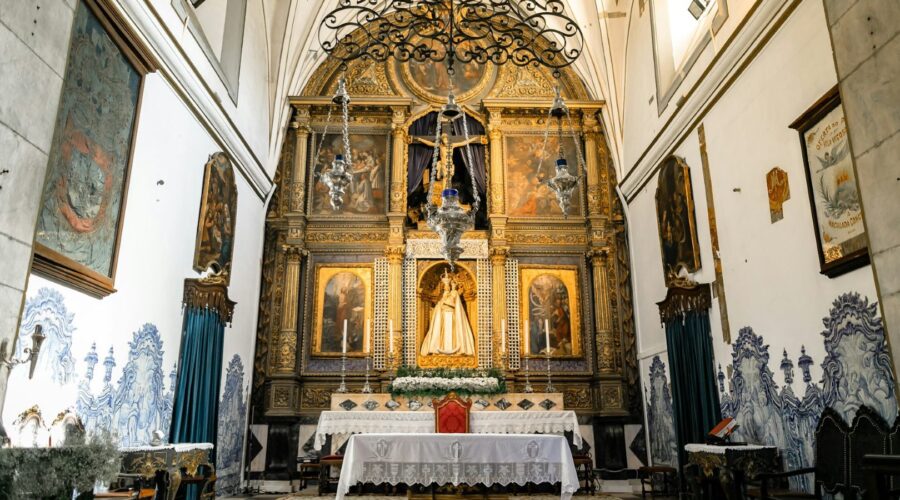
Jesus: The Good Shepherd, Leading His Flock with Compassion and Care
Introduction
In the tapestry of Christianity, Jesus Christ is depicted as the Good Shepherd, a compassionate and protective figure who guides and nourishes his followers. This metaphor, deeply rooted in biblical parables, portrays Jesus’ unwavering love and dedication to his flock.
The Attributes of the Good Shepherd
The biblical descriptions of the Good Shepherd ascribe several defining attributes to Jesus:
- Compassion: Jesus extended empathy and love to all, regardless of their background or circumstances.
- Protection: He acted as a shield against adversity, offering refuge and guidance to his followers.
- Provision: Jesus provided spiritual and physical sustenance, ensuring the well-being of his flock.
- Knowledge: He intimately knew and understood the needs of each individual.
The Parables of the Lost
The parable of the lost sheep (Luke 15:3-7) vividly illustrates Jesus’ role as the Good Shepherd. The shepherd leaves his secure flock to search relentlessly for the one that has gone astray, demonstrating his unwavering love and determination to restore.
Another parable, the parable of the lost coin (Luke 15:8-10), highlights the joy Jesus experiences in finding and bringing back those who have strayed. He rejoices over the recovery of each lost soul.
The Shepherd’s Call
Jesus’ call as the Good Shepherd invites his followers to embrace a life of humility, service, and compassion. He exhorts his disciples to care for his sheep:
“Feed my sheep.” (John 21:17)
This call to shepherd the flock extends to all believers, who are empowered by the Holy Spirit to tend to the needs of their fellow Christians.
The Sheep’s Response
In response to the Good Shepherd’s care, Jesus’ followers are called to:
- Trust: Have faith in Jesus’ guidance and protection.
- Obey: Follow his commandments and teachings.
- Love: Demonstrate compassion towards others.
- Bear witness: Share the gospel message with the world.
Conclusion
Jesus Christ, the Good Shepherd, stands as a beacon of hope and guidance for all who seek his embrace. His love, protection, and provision are a constant source of comfort and strength. By embracing his call and responding with trust, obedience, and love, we become a part of his flock, led by the shepherd who will never abandon us.
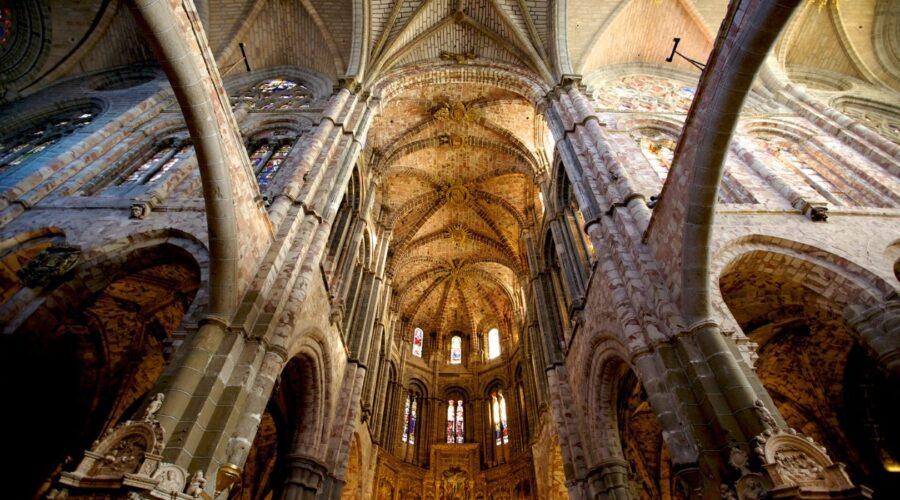
Discover the Rich History and Inspiring Mission of Holy Name Catholic Church
A Sanctuary of Faith and Community
Nestled amidst the vibrant tapestry of its surroundings, Holy Name Catholic Church stands as a beacon of spiritual light and communal warmth. Rooted in a deep commitment to its parishioners and the broader community, Holy Name has played a pivotal role in shaping the lives of generations of faithful believers.
A Journey Through Time
Humble Beginnings
In the early 20th century, as the bustling city of Copperas Cove, Texas, experienced rapid growth, the need for a Catholic church became increasingly apparent. In 1928, the seed was planted when a small group of devoted families gathered in a schoolhouse, longing for a sacred space to nurture their faith.
Laying the Foundation
With unwavering determination, the congregation raised funds, acquired land, and embarked on the construction of their first chapel. In 1932, Holy Name Catholic Church was officially established, named in honor of the Holy Name of Jesus.
A Growing Congregation
As the years passed, the church community continued to expand, necessitating a larger space for worship. In 1963, a new and spacious building was constructed, accommodating the growing number of parishioners. The original chapel was converted into a gathering space and parish hall.
The Pillars of Community
Worship and Spirituality
At the heart of Holy Name Catholic Church lies its unwavering commitment to worship and spiritual growth. Daily Mass, sacraments, and devotions provide opportunities for parishioners to connect with God and deepen their faith.
Education and Formation
Recognizing the importance of lifelong learning, Holy Name places a strong emphasis on education and formation. Religious education classes for children, youth, and adults cultivate a deeper understanding of the Catholic faith.
Service and Charity
Inspired by the teachings of Jesus, Holy Name actively engages in acts of service and charity within the community. Outreach programs, food pantries, and support groups extend a helping hand to those in need.
A Vibrant and Diverse Parish
Cultures and Traditions
Holy Name Catholic Church is proud of its diverse and welcoming community, embracing members from various cultural backgrounds. The church celebrates the richness of different traditions through special liturgies, events, and festivities.
Inclusivity and Outreach
Holy Name is committed to inclusivity and extending its ministry to all, regardless of their background or circumstances. The church actively reaches out to the marginalized, offering support and a sense of belonging.
Leadership and Governance
Pastoral Team
Holy Name Catholic Church is led by a dedicated pastoral team, consisting of the pastor, associate pastors, and staff. Their mission is to guide the parish community in its spiritual journey and to provide leadership in matters of faith and service.
Parish Council
The Parish Council serves as an advisory body to the pastor, representing the voice of the congregation and assisting in decision-making. Council members are elected by the parishioners and work closely with the pastoral team to ensure the well-being of the parish.
Partnerships and Collaborations
Holy Name Catholic Church actively collaborates with other religious organizations, community groups, and social service agencies. These partnerships strengthen the impact of the church’s mission and extend its reach to a wider audience.
Connecting with Holy Name
For those seeking to connect with Holy Name Catholic Church and explore its vibrant community, there are multiple avenues to engage:
- Official Website
- Facebook Page
- Visit the church at 802 W Avenue F, Copperas Cove, TX 76522
- Contact the parish office at (254) 547-4488
Conclusion
Holy Name Catholic Church has played an integral role in the spiritual and communal life of Copperas Cove for nearly a century. Through its unwavering commitment to worship, education, service, and inclusivity, Holy Name continues to be a beacon of faith and inspiration for its parishioners and the broader community. As the church embarks on a new chapter in its history, it remains dedicated to fostering spiritual growth, strengthening the bonds of community, and extending its mission of love and compassion.
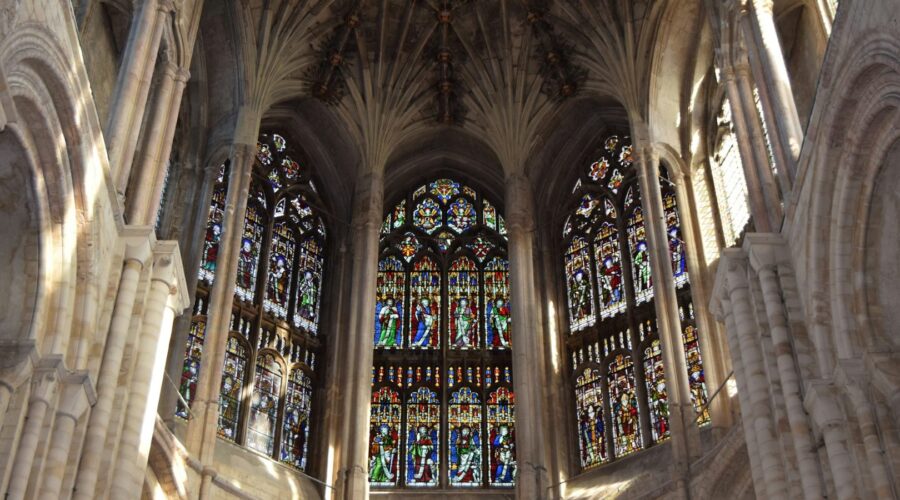
The Holy Eucharist: A Guide for Understanding and Receiving
Introduction
The Holy Eucharist, also known as Holy Communion, is one of the most important sacraments in the Christian faith. It is a sacred meal in which believers partake of bread and wine that are consecrated as the body and blood of Christ. The Eucharist is a central part of Christian worship, symbolizing the unity of believers with one another and with Christ. This guide will provide a comprehensive overview of the Holy Eucharist, including its history, significance, and how to receive it properly.
History of the Eucharist
The Eucharist has its origins in the Last Supper that Jesus shared with his disciples before his crucifixion. During this meal, Jesus took bread and wine and blessed them, saying, “This is my body, which is given for you; do this in remembrance of me.” Likewise, he took the cup of wine and said, “This is my blood of the new covenant, which is poured out for you for the forgiveness of sins.”
After Jesus’s ascension, the disciples continued to gather for meals to remember their Lord’s sacrifice. Over time, these meals evolved into the Eucharist as we know it today. The early Church Fathers, such as Ignatius of Antioch and Justin Martyr, wrote about the importance of the Eucharist in the Christian life.
Significance of the Eucharist
The Eucharist is a multi-faceted sacrament with a rich symbolism. Here are some of its key meanings:
- Memorial of Christ’s Sacrifice: The Eucharist reminds us of the sacrificial death of Jesus on the cross. As we partake of the bread and wine, we remember his love and forgiveness.
- Real Presence of Christ: Most Christian denominations believe that the bread and wine become the actual body and blood of Christ through the power of the Holy Spirit. This is known as the doctrine of transubstantiation.
- Unity with Christ and the Church: When we receive the Eucharist, we are united with Christ and with all believers. It is a symbol of our shared faith and our common journey as a community.
- Nourishment for the Soul: The Eucharist provides spiritual nourishment for our souls. It strengthens our faith, gives us hope, and helps us to live in accordance with God’s will.
How to Receive the Eucharist
The reception of the Eucharist varies slightly among different Christian denominations. However, there are some general guidelines that apply to most:
- Be Baptized: In most denominations, baptism is a prerequisite for receiving the Eucharist. Baptism signifies our entrance into the Christian community and our willingness to follow Christ.
- Be in a State of Grace: Some denominations require that you confess any serious sins before receiving the Eucharist. This is to ensure that you are in a right relationship with God.
- Approach Reverently: The Eucharist is a sacred sacrament, so approach it with reverence and devotion. Stand or kneel in a respectful manner and receive the bread and wine with open hands.
- Consume the Elements: Once you have received the bread and wine, consume them immediately. Do not hold them in your mouth or take them out of the sanctuary.
Table of Different Christian Denominations’ Views on the Eucharist
| Denomination | View on the Eucharist |
| — | — |
| Roman Catholic | Real Presence of Christ through transubstantiation |
| Orthodox Churches | Real Presence of Christ through the Holy Spirit |
| Lutheran Church | Real Presence of Christ through consubstantiation |
| Reformed Churches | Symbolic representation of Christ’s body and blood |
| Methodist Church | Means of grace, where Christ is spiritually present |
| Baptist Churches | Memorial of Christ’s sacrifice, no real presence |Tips for Receiving the Eucharist with Meaning
Here are some tips to help you receive the Eucharist with greater meaning and reverence:
- Prepare your heart through prayer and reflection.
- Focus on Christ’s presence in the Eucharist.
- Be mindful of your intention to receive it worthily.
- Spend time in adoration or thanksgiving after receiving.
- Let the Eucharist nourish your soul and guide your life.
Conclusion
The Holy Eucharist is a sacred and meaningful sacrament that is central to the Christian faith. It reminds us of Christ’s sacrifice, unites us with him and with one another, and nourishes our souls. By receiving the Eucharist with reverence and devotion, we can experience the grace and presence of God in a profound way. We pray that this guide has provided you with a deeper understanding and appreciation of this beautiful and life-giving sacrament.
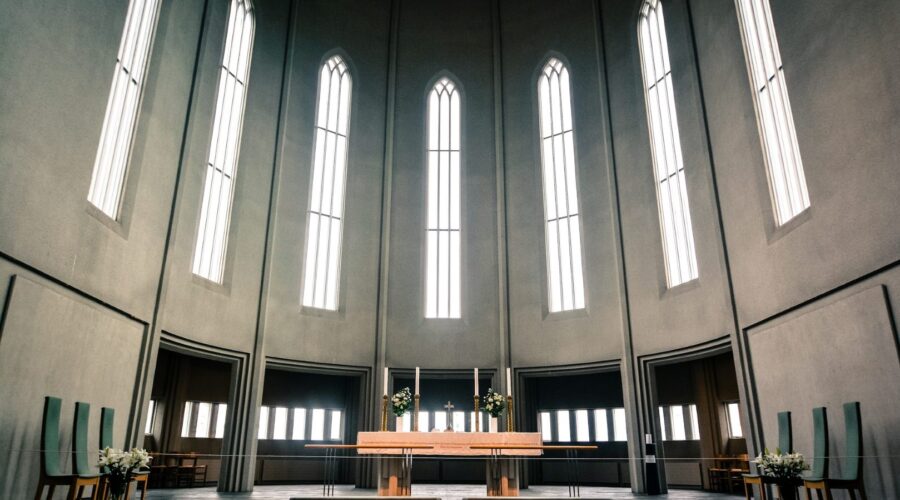
Unveiling the Central Figure of Catholicism: A Comprehensive Guide to the Catholic Pope
Introduction
The Catholic Church, an enduring institution spanning centuries, holds the Pope as its spiritual and administrative leader. With a role steeped in tradition and global influence, understanding the significance of the Pope is paramount for comprehending the fabric of Catholicism.
Historical Origins of the Papacy
The Role of Peter
The foundation of the Papacy can be traced back to Saint Peter, one of Jesus’s twelve apostles. According to Catholic tradition, Jesus entrusted Peter with the “keys to the kingdom of heaven” (Matthew 16:19), symbolizing his authority to govern the Church.
Early Bishops of Rome
Peter became the first Bishop of Rome, establishing the city as the center of Christian leadership. As Christianity spread throughout the Roman Empire, the Bishop of Rome emerged as the primus inter pares (first among equals) among other bishops.
Evolution of Papal Authority
Council of Nicaea (325)
The Council of Nicaea, convened by Emperor Constantine, officially recognized the Bishop of Rome as holding a unique position within the Christian hierarchy, further solidifying the papacy’s authority.
Papal Supremacy
Over time, the Pope’s authority grew significantly. During the Middle Ages, the Pope claimed supremacy over other bishops and secular rulers, leading to a series of conflicts with kings and emperors.
Key Aspects of Papal Authority
Spiritual Leadership
The Pope serves as the spiritual guide of the Catholic Church, responsible for preserving and interpreting Catholic doctrine. He is seen as the successor of Peter and the vicar of Christ on Earth.
Administrative Authority
The Pope is the head of the Vatican City State, the smallest independent state in the world. He also governs the Roman Catholic Church, overseeing its administrative structures, including dioceses, parishes, and religious orders.
Magisterium
The Pope possesses the supreme teaching authority within the Catholic Church, known as the magisterium. His teachings are considered infallible when he speaks on matters of faith and morals.
Responsibilities of the Pope
Ordination and Consecration
The Pope ordains new bishops and consecrates archbishops, ensuring apostolic succession within the Catholic Church.
Ecumenical Dialogue
The Pope engages in ecumenical dialogue with other Christian denominations and religions, striving to promote unity and foster interfaith cooperation.
Global Leadership
The Pope is a global figure who speaks out on social justice, peace, and other issues of international concern. He often travels abroad to meet with world leaders and address various challenges.
Election of the Pope
When a Pope dies or resigns, the College of Cardinals gathers in conclave to elect a new Pope. The process is highly secretive, and the cardinals are sequestered until a two-thirds majority is reached.
Papal Insignia and Symbols
Tiara and Pallium
Traditionally, the Pope wears a tiara, a triple-tiered crown, symbolizing his earthly and spiritual authority. He also wears a pallium, a woolen band around his neck, representing his role as a shepherd.
Papal Cross and Fisherman’s Ring
The Pope carries a pectoral cross, a symbol of his faith. He also wears a fisherman’s ring, adorned with the image of Saint Peter, denoting his apostolic ministry.
Current State of the Papacy
Pope Francis, elected in 2013, has brought a focus on social justice and environmental stewardship to the papacy. He has emphasized the importance of dialogue, humility, and inclusivity.
Conclusion
The Catholic Pope serves as the central figure in the Catholic Church, embodying its spiritual, administrative, and global leadership. Understanding the history, authority, responsibilities, and symbols associated with the papacy is essential for comprehending the wider context of Catholicism and its influence on the world.
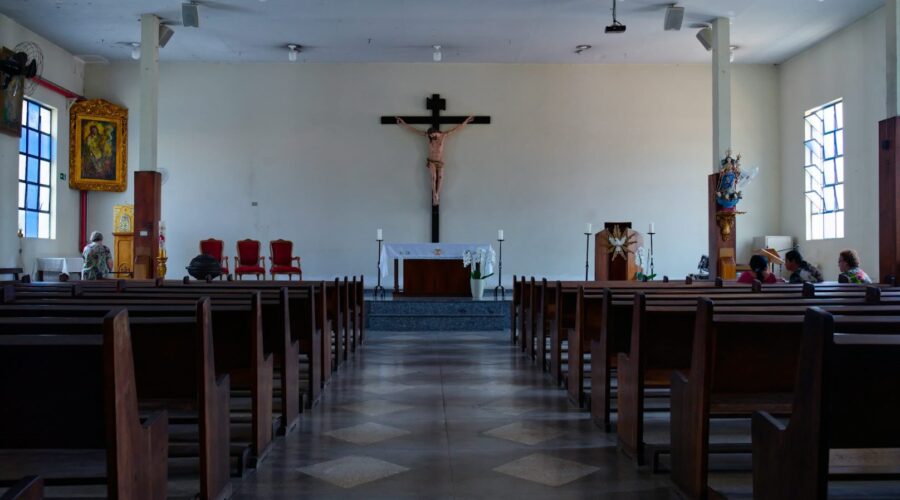
St. Justin Martyr: Life, Works, and Legacy
Introduction
St. Justin Martyr (c. 100 – c. 165) was an early Christian philosopher, theologian, and apologist. He is considered one of the most important figures in the development of Christian thought and has been recognized as a saint by both the Catholic and Orthodox churches.
Life and Martyrdom
Justin was born in Flavia Neapolis (modern-day Nablus, Palestine) around the year 100. He was a pagan philosopher who converted to Christianity after a series of mystical experiences. He became a prominent apologist for the Christian faith, defending it against pagan and Jewish criticism.
In around 150, Justin was martyred under the Roman Emperor Marcus Aurelius. He was accused of blasphemy by a pagan philosopher named Crescens and was beheaded along with six of his companions.
Works
Justin is best known for his two Apologies, written in defense of Christianity. The First Apology was addressed to the Roman Emperor Antoninus Pius and the Second Apology to the Roman Senate. In his Apologies, Justin defended the Christian faith against accusations of atheism, immorality, and treason. He also argued that Christianity was the true fulfillment of Greek philosophy and Judaism.
In addition to his Apologies, Justin also wrote several other works, including:
* Dialogue with Trypho: A work in which Justin debates with a Jewish scholar named Trypho.
* On the Resurrection: A treatise on the Christian doctrine of the resurrection.
* On Monarchy: A work on the nature of God.Theology
Justin’s theology was influenced by both Greek philosophy and Jewish tradition. He believed that God was a transcendent and eternal being who created the world out of nothing. He also believed that Jesus Christ was the Son of God and that he came to earth to redeem humanity from sin.
Justin was a strong defender of the Trinity, arguing that there were three distinct persons in the Godhead: God the Father, God the Son, and God the Holy Spirit. He also believed in the importance of baptism and the Eucharist.
Legacy
St. Justin Martyr is considered one of the most important figures in the development of Christian thought. His Apologies helped to defend the Christian faith against pagan and Jewish criticism, and his theology influenced the development of Christian doctrine. He is also one of the first Christian writers to use the term “Logos” to refer to Jesus Christ, a term that would later be developed by other Christian theologians.
Justin’s feast day is celebrated on June 1 in the Catholic Church and on August 1 in the Orthodox Church. He is the patron saint of philosophers and apologists.
Additional Information
* **Table of Justin Martyr’s Works**
| Title | Type | Date |
|—|—|—|
| First Apology | Apology | c. 150 |
| Second Apology | Apology | c. 150 |
| Dialogue with Trypho | Debate | c. 155 |
| On the Resurrection | Treatise | c. 150 |
| On Monarchy | Treatise | c. 150 |* **Links to Justin Martyr’s Works:**
* [First Apology](https://www.newadvent.org/fathers/0101.htm)
* [Second Apology](https://www.newadvent.org/fathers/0102.htm)
* [Dialogue with Trypho](https://www.newadvent.org/fathers/0103.htm)
* [On the Resurrection](https://www.newadvent.org/fathers/0104.htm)
* [On Monarchy](https://www.newadvent.org/fathers/0105.htm)* **Timeline of Justin Martyr’s Life:**
* c. 100: Born in Flavia Neapolis, Palestine.
* c. 130: Converts to Christianity.
* c. 150: Writes the First and Second Apologies.
* c. 155: Writes the Dialogue with Trypho.
* c. 165: Martyred under the Roman Emperor Marcus Aurelius.* **Patronage of St. Justin Martyr:**
* Philosophers
* Apologists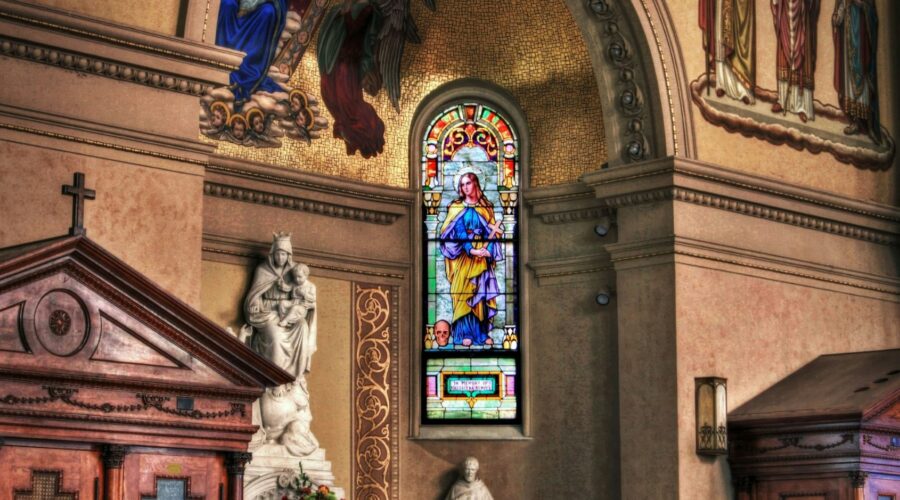
Assumption Church: A Guide to History, Architecture, and Significance
Introduction
Assumption Church, also known as the Church of the Assumption of the Blessed Virgin Mary, stands as an architectural and historical marvel in several cities around the world. This stunning edifice has captivated hearts and minds for centuries, holding a profound significance for religious communities and art enthusiasts alike.
In this comprehensive guide, we embark on a journey to uncover the rich tapestry of Assumption Church’s history, architectural wonders, and religious importance.
History
Early Origins
The origins of Assumption Church can be traced back to the 4th century, when Emperor Constantine the Great converted to Christianity and commissioned the construction of churches throughout the Roman Empire.
One of the earliest known Assumption churches was built in Jerusalem on the site believed to be where Mary, the mother of Jesus, ascended to heaven. This church was destroyed in 614 AD by the Persian invasion.
Medieval Era
During the medieval period, Assumption churches were built across Europe, often as part of monasteries or cathedrals. These churches typically featured Romanesque or Gothic architectural styles and were adorned with elaborate carvings and stained glass windows.
One of the most famous Assumption churches from this era is the Assumption Cathedral in Moscow, Russia. This magnificent edifice was built in the 15th century and served as the coronation church for Russian tsars.
Renaissance and Baroque Eras
During the Renaissance and Baroque eras, Assumption churches continued to be built and expanded throughout Europe. These churches embraced the architectural styles of the time, incorporating elements such as domes, cupolas, and intricate facades.
Notable examples from this period include the Assumption Cathedral in Venice, Italy, and the Church of the Assumption in Valletta, Malta.
Architecture
Distinctive Features
Assumption churches are characterized by several distinctive architectural features that set them apart from other religious buildings.
- Symbolic Dome: Many Assumption churches feature a central dome, symbolizing the heavenly realm where Mary ascended.
- Elaborate Facades: The facades of Assumption churches are often adorned with intricate carvings, sculptures, and paintings depicting scenes from Mary’s life.
- Stained Glass Windows: Stained glass windows in Assumption churches frequently depict the Assumption of Mary into heaven.
Architectural Styles
Assumption churches have been built in a wide range of architectural styles over the centuries, including:
- Romanesque: Thick walls, rounded arches, and small windows
- Gothic: Pointed arches, ribbed vaults, and large stained glass windows
- Renaissance: Classical proportions, domes, and elaborate ornamentation
- Baroque: Ornate facades, curved lines, and opulent interiors
Religious Significance
Assumption Church holds great religious significance for Christians, particularly for Catholics and Orthodox Christians. The Assumption of Mary is a central belief in Christian tradition, referring to the belief that Mary was taken up into heaven both body and soul at the end of her earthly life.
Assumption churches are often used for:
- Masses and Services: Regular religious services are held in Assumption churches, particularly on the feast of the Assumption (August 15th).
- Pilgrimage Sites: Some Assumption churches are renowned pilgrimage sites, attracting visitors seeking spiritual renewal and connection with Mary.
- Devotional Practices: Assumption churches are often places where people pray, light candles, and offer other devotions to Mary.
List of Notable Assumption Churches
Here is a non-exhaustive list of notable Assumption churches around the world:
- Assumption Cathedral, Moscow, Russia
- Assumption Cathedral, Vladimir, Russia
- Assumption Cathedral, Verona, Italy
- Assumption Cathedral, Venice, Italy
- Church of the Assumption, Valletta, Malta
- Assumption Cathedral, Denver, United States
- Assumption Cathedral, San Antonio, United States
- Assumption Church, Chicago, United States
Conclusion
Assumption Church is a testament to the enduring faith and artistic expression of Christian communities throughout history. Its stunning architecture, rich symbolism, and religious significance make it a beloved destination for pilgrims, art enthusiasts, and believers alike.
From the early origins in Jerusalem to the magnificent edifices that grace cities around the world, Assumption Church continues to inspire awe and devotion, serving as a timeless reminder of the enduring presence of the divine in our lives.
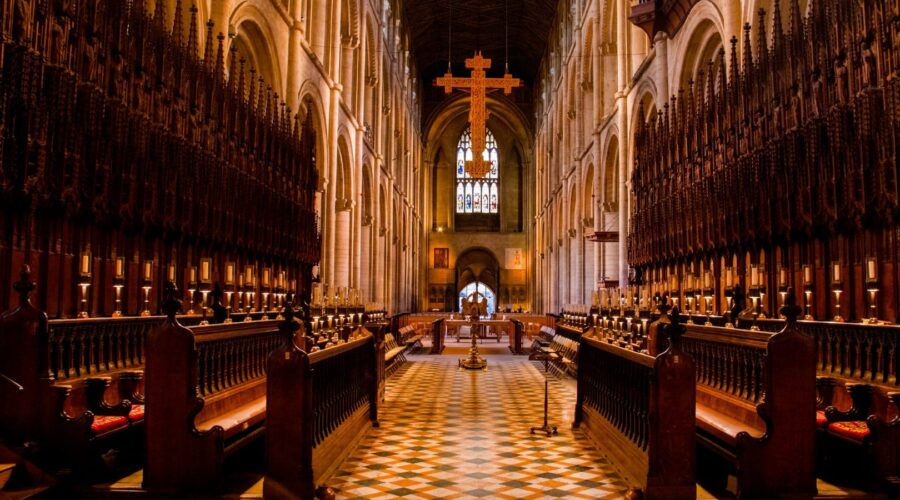
St. Peter Catholic Church: A Historical and Spiritual Landmark
Introduction
St. Peter Catholic Church is a beacon of faith and architectural beauty in the heart of Chicago’s vibrant West Loop neighborhood. Established in 1844, it has witnessed over a century and a half of Chicago’s history and played a pivotal role in the spiritual lives of countless parishioners.
Historical Significance
Foundation and Early Years
St. Peter Catholic Church traces its origins to 1844 when a group of German immigrants established a small congregation in a rented house near the Chicago River. The parish’s first pastor, Rev. John B. Stallo, led the community through its formative years.
Growth and Expansion
As Chicago rapidly expanded in the late 19th century, so did St. Peter’s congregation. In 1868, the original church building was replaced with a larger structure at Clark and Madison Streets. The parish continued to grow, and by the early 20th century, it had become one of the largest Catholic churches in Chicago.
Architectural Marvel
Neo-Gothic Design
St. Peter Catholic Church is a testament to the architectural prowess of its time. Built in the Neo-Gothic style, the church features soaring spires, intricate stained glass windows, and a graceful nave. Its twin towers reach a height of 198 feet, making it a prominent landmark on the Chicago skyline.
Interior Features
The interior of the church is equally impressive. The nave is adorned with a vaulted ceiling, marble columns, and intricate mosaics. The sanctuary features a large stained glass window depicting the life of St. Peter and a stunning altarpiece.
Spiritual and Community Center
Liturgical Life
St. Peter Catholic Church is a vibrant center of liturgical life. Daily and Sunday Masses are celebrated in English, Spanish, and Polish. The parish also offers a wide range of devotional services, including Eucharistic adoration, rosary, and Stations of the Cross.
Community Outreach
St. Peter Catholic Church has a strong commitment to community outreach. The parish operates a food pantry, a soup kitchen, and a homeless shelter. It also provides educational programs, social services, and support to the West Loop neighborhood.
Parish Life
Educational Programs
St. Peter Catholic Church offers a wide range of educational programs for all ages. The parish school, established in 1869, provides a quality Catholic education from pre-kindergarten through eighth grade. The parish also offers adult education classes, Bible studies, and faith formation programs.
Cultural and Social Events
St. Peter Catholic Church is a hub for cultural and social events. The parish hosts annual festivals, concerts, and lectures. It also has a vibrant community center that offers meeting spaces, recreational activities, and social gatherings.
Practical Information
Location and Contact Information
St. Peter Catholic Church is located at 112 W. Madison Street, Chicago, IL 60602. The church office can be reached at (312) 332-4510, and the website can be found at https://www.stpetercatholicchurch.org.
Mass Schedule
Mass schedules are as follows:
Day Time Monday-Friday 7:00 AM, 12:10 PM Saturday 5:00 PM Sunday 7:30 AM, 9:00 AM, 10:45 AM (Spanish), 12:30 PM Conclusion
St. Peter Catholic Church is more than just a building; it is a symbol of faith, community, and architectural splendor. For over 175 years, it has served as a spiritual beacon for countless Chicagoans and continues to be a vibrant center of liturgical life and community outreach in the heart of the city.
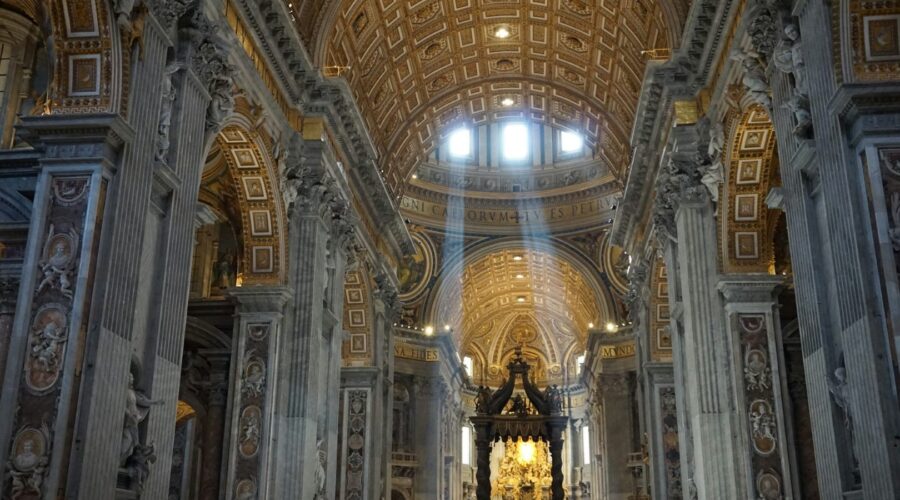
Unveiling the Grandeur of St. Gregory the Great Church: A Journey Through History and Architecture
History and Significance
Nestled in the heart of Rome, St. Gregory the Great Church stands as a testament to centuries of faith and architectural evolution.
The church’s origins trace back to the 6th century, when Pope Gregory I commissioned its construction on the site of a former temple dedicated to the goddess Diana. Saint Gregory, a renowned theologian and the first Benedictine pope, is revered as one of the most influential figures in Western Christianity.
Over the centuries, the church underwent numerous renovations and expansions. In the 16th century, a major restoration project commissioned by Pope Sixtus V transformed its facade and interior. The Baroque-era additions further embellished the church, adding opulent decorations and a grand cupola.
Architectural Marvel
St. Gregory the Great Church is an architectural masterpiece that blends various artistic styles, from the ancient foundations to the Baroque enhancements.
Classical Foundations
The church’s lower levels reflect its classical origins. The granite columns and arches supporting the nave and aisles hark back to the days of the Roman Empire.
Renaissance Elegance
The 16th-century renovations introduced Renaissance elements into the church. The harmonious proportions and elegant details, such as the medallions and busts of saints, exemplify the era’s artistic principles.
Baroque Splendor
The Baroque period brought a dramatic transformation to St. Gregory’s interior. The ceiling of the nave was adorned with a magnificent fresco by Guido Reni depicting the Glorification of Saint Gregory. The walls were decorated with elaborate stucco moldings, and the sanctuary was adorned with a gilded altar.
The crowning glory of the church is its massive cupola, designed by Giacomo Della Porta and completed in the 17th century. Its soaring height and intricate decorations create an awe-inspiring effect.
Interior Splendors
Beyond its architectural beauty, St. Gregory the Great Church houses a wealth of artistic treasures:
- Altar of St. Gregory the Great: The main altar, designed by Carlo Maderno, features a marble relief of Saint Gregory and a renowned mosaic depicting the Last Supper.
- Cappella Salviati: This side chapel, added in the 17th century, showcases a painting by Ascensio Salviati entitled the “Madonna and Child.”
- Oratory of St. Paul: This small chapel contains a 9th-century fresco depicting the life of St. Paul.
- Baptismal Font: The church’s baptismal font, dating back to the 15th century, is a beautiful example of Renaissance craftsmanship.
Monastery and Gardens
Adjacent to the church is the Benedictine monastery, founded by Saint Gregory. The monastery is now home to a community of Benedictine monks who continue the traditions of monastic life and scholarship.
The church and monastery are surrounded by tranquil gardens, offering a serene escape from the bustle of Rome. The gardens feature a variety of plant life, including ancient olive trees and blooming flowers.
Visiting Information
St. Gregory the Great Church is open to the public daily. Visitors are encouraged to dress respectfully and maintain a quiet demeanor.
Address: Piazza San Gregorio Magno, 1
Hours: Open daily, 7:30am – 7:00pm
Admission: FreeConclusion
St. Gregory the Great Church is a captivating destination that combines historical significance, architectural splendor, and artistic treasures. Its centuries-long journey from ancient foundations to Baroque extravagance has created a masterpiece that continues to inspire and awe visitors to this day.
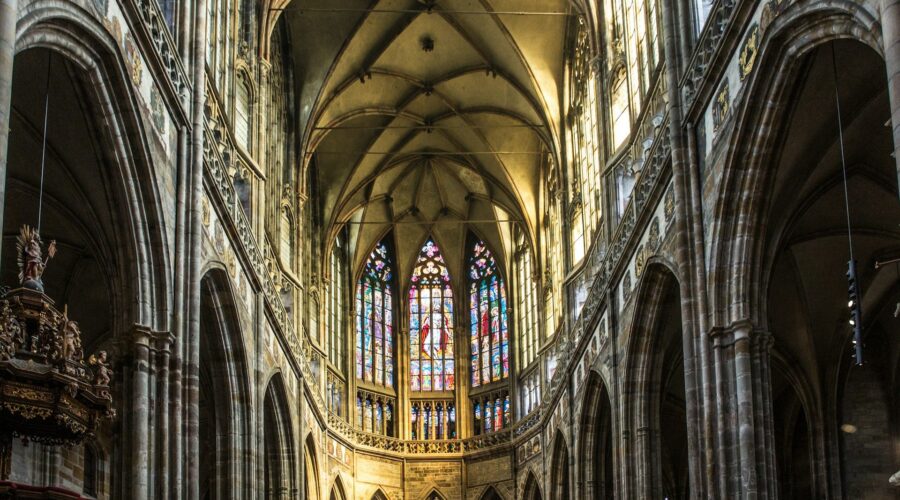
Unveiling the Splendor of San Juan Church: A Detailed Exploration
A Historical Tapestry
San Juan Church, nestled in the heart of San Juan, Puerto Rico, stands as a testament to the island’s rich history and architectural heritage. Its origins trace back to 1521, when the Spanish conquistadors established a humble chapel on the site. Over the centuries, the chapel evolved into the magnificent Gothic-Renaissance structure we admire today.
The Birth of a Masterpiece
In 1540, the chapel underwent a significant expansion, transforming into a full-fledged church. The construction was led by renowned architect Rodrigo de Liendo, who infused the building with a blend of Gothic and Renaissance influences.
Architectural Marvels
San Juan Church boasts an array of architectural highlights that captivate visitors.
- Gothic Ribbed Vaults: The intricate ribbed vaults soar overhead, creating an awe-inspiring sense of space.
- Renaissance Façade: The elegant Renaissance façade features a delicate rose window and intricate carvings.
- Baroque Altars: The interior is adorned with ornate Baroque altars, adorned with gold leaf and intricate sculptures.
- Impressive Transept: The transept, where the nave and transept meet, is highlighted by a large crucifix and stunning stained glass windows.
- Spanish Colonial Ceiling: The Spanish colonial ceiling, painted with vibrant hues, depicts scenes from the life of Saint John the Baptist.
A Spiritual Sanctuary
Beyond its architectural splendor, San Juan Church serves as a spiritual sanctuary for the local community.
Religious Significance
The church is dedicated to Saint John the Baptist, the patron saint of San Juan. It is a prominent pilgrimage site, attracting devotees from across Puerto Rico and beyond.
Mass and Services
San Juan Church hosts regular masses throughout the week. It also offers a variety of religious services, including baptisms, weddings, and confessions.
Community Hub
The church plays a vital role in the local community. It hosts various events, including concerts, art exhibitions, and educational programs.
Visiting San Juan Church
If you’re planning a visit to San Juan Church, here are some helpful tips:
Plan Your Visit
The church is open daily from 9 am to 5 pm. Guided tours are available for a small fee.
Dress Code
As a place of worship, appropriate dress is encouraged. Please avoid shorts, tank tops, and revealing clothing.
Photography
Photography is allowed inside the church, but please be respectful of worshippers and avoid using flash.
Accessibility
San Juan Church is wheelchair accessible. Ramp access is available through the side entrance.
Contact Information
For more information or to schedule a guided tour, please contact:
- Phone: (787) 722-0995
- Email: [email protected]
- Website: www.sanjuanchurch.org
Additional Information
Here are some additional details about San Juan Church:
- The church is a UNESCO World Heritage Site.
- It is the oldest church in Puerto Rico.
- The church is home to a museum that showcases its history and artifacts.
- San Juan Church has been featured in numerous films and television shows.
San Juan Church is a must-visit destination for anyone interested in Puerto Rican history, architecture, or religion. Its grandeur and spiritual significance will leave a lasting impression on every visitor.

Unveiling the Sacred Haven: A Comprehensive Guide to Our Lady of Sorrows Church
A Journey into History and Significance
Our Lady of Sorrows Church stands as a beacon of faith and heritage, a sacred space that has witnessed countless moments of prayer, reverence, and community. Its origins trace back to the mid-1800s, when a small group of Irish Catholic immigrants gathered to establish their own place of worship in the heart of Boston.
In 1845, the cornerstone was laid, and by 1847, the magnificent Gothic Revival structure soared into the sky. Its intricate carvings, towering spires, and stained-glass windows captivated the imagination of both parishioners and visitors alike.
Throughout the years, Our Lady of Sorrows Church has served as a cornerstone of the Irish American community in Boston. It provided a sanctuary for immigrants seeking solace and a sense of belonging in a new land.
Architectural Splendor and Artistic Delights
Gothic Revival Grandeur
The church’s architectural style is a testament to the splendor of Gothic Revival design. Its pointed arches, ribbed vaults, and buttressed walls create a sense of awe and wonder. The exterior is adorned with intricate carvings, including gargoyles and other mythical creatures.
Towering Spires
Two towering spires adorn the church’s façade, reaching towards the heavens. They are a symbol of the church’s aspiration and its connection to the divine.
Stained Glass Marvels
The church’s stained-glass windows are true masterpieces, each one telling a biblical story or depicting a saint. The vibrant colors and exquisite craftsmanship fill the interior with ethereal light, creating a breathtaking ambiance.
Spiritual Sanctuary and Community Hub
A Place of Prayer and Worship
Our Lady of Sorrows Church is first and foremost a place of worship. Its sanctuary provides a serene and uplifting environment for prayer, meditation, and the celebration of Mass.
Parochial Life and Outreach
Beyond its liturgical functions, the church serves as a vibrant community hub. It offers a wide range of programs and services, including Sunday school, youth groups, and outreach programs for the needy.
A Center for Arts and Culture
The church also plays a significant role in the cultural life of the community. It hosts concerts, lectures, and other events that enrich the neighborhood and beyond.
Visiting Our Lady of Sorrows Church
Location and Accessibility
Our Lady of Sorrows Church is conveniently located in the heart of Boston’s South End neighborhood. It is accessible by public transportation, car, or foot.
Mass Times and Special Services
Mass is celebrated regularly throughout the week and on weekends. Special services, such as weddings and funerals, are also held by appointment. For the most up-to-date schedule, please visit the church’s website.
Tours and Private Viewings
Guided tours are available upon request, providing visitors with an in-depth look at the church’s history, architecture, and art. Private viewings can also be arranged for groups or individuals.
Additional Information
Official Website:
Address:
217 East Broadway
Boston, MA 02127Phone Number:
(617) 268-3163
Email:
Social Media:

Winners Chapel: A Comprehensive Guide to Bishop David Oyedepo’s Ministry
Introduction
Winners Chapel International is a leading Pentecostal Christian denomination founded in 1981 by Bishop David Oyedepo. Over the years, the ministry has grown into a global force with millions of members worldwide. This comprehensive guide will provide an in-depth look into the history, beliefs, practices, and impact of Winners Chapel.
History
Early Beginnings
Bishop David Oyedepo, a former lecturer at Kwara State Polytechnic, founded the ministry on September 17, 1981. The first service was held in a small building in Kaduna, Nigeria, with just a handful of members.
Expansion and Growth
Over the next few years, Winners Chapel experienced rapid growth, establishing new branches in major cities across Nigeria. By the early 1990s, the ministry had gained significant international recognition, with churches being planted in countries such as Ghana, Togo, and Benin.
Canaanland: The Global Headquarters
In 1998, Bishop Oyedepo inaugurated Canaanland, a sprawling 5,000-acre complex in Ota, Ogun State, Nigeria. This became the global headquarters of Winners Chapel and a major center for Christian gatherings and activities.
Beliefs and Teachings
Core Doctrines
- The Bible as the infallible Word of God
- The Trinity (Father, Son, and Holy Spirit)
- The deity and lordship of Jesus Christ
- The importance of prayer, fasting, and the Holy Spirit
li> The need for salvation through faith in Jesus
Emphasis on Faith and Prosperity
Winners Chapel places a strong emphasis on faith and believes that God desires to bless His children with health, wealth, and prosperity. Members are taught to develop their faith through prayer, Bible study, and positive confessions.
Practices and Activities
Church Services
Winners Chapel holds regular church services where members gather for worship, prayers, and teachings. Services are characterized by vibrant praise and worship, energetic sermons, and opportunities for personal testimony.
Prayer Meetings
Prayer is considered a vital aspect of the Christian life in Winners Chapel. The ministry encourages members to engage in regular prayer meetings, both individually and corporately. Special prayer programs, such as the “Morning Dew” daily devotion, are also organized.
Fasting and Personal Development
Fasting is practiced as a means of spiritual discipline and seeking God’s favor. Winners Chapel also emphasizes the importance of personal development, offering various courses and seminars on leadership, finances, and other life skills.
Impact and Influence
Numerical Growth and Global Presence
Winners Chapel has become one of the largest Pentecostal denominations in the world, with over 3,000 branches in over 60 countries. The ministry’s global reach has enabled it to impact countless lives and communities.
Educational and Social Initiatives
Through its Covenant University and other educational institutions, Winners Chapel has made significant contributions to higher education in Nigeria and beyond. The ministry is also involved in various social and outreach programs, including healthcare, disaster relief, and rehabilitation services.
Leadership and Mentorship
Bishop David Oyedepo is widely respected as a spiritual leader and mentor. His teachings have inspired and empowered millions of Christians around the globe. Winners Chapel has trained and commissioned numerous pastors and church leaders who are spreading the Gospel and making a positive impact in their communities.
Conclusion
Winners Chapel International has come a long way since its humble beginnings in 1981. Under the leadership of Bishop David Oyedepo, the ministry has grown into a global phenomenon, transforming lives, impacting communities, and spreading the Gospel of Jesus Christ to the ends of the earth. Its emphasis on faith, prayer, and prosperity, coupled with its commitment to education, social welfare, and leadership development, has established Winners Chapel as a significant force in the Christian world.